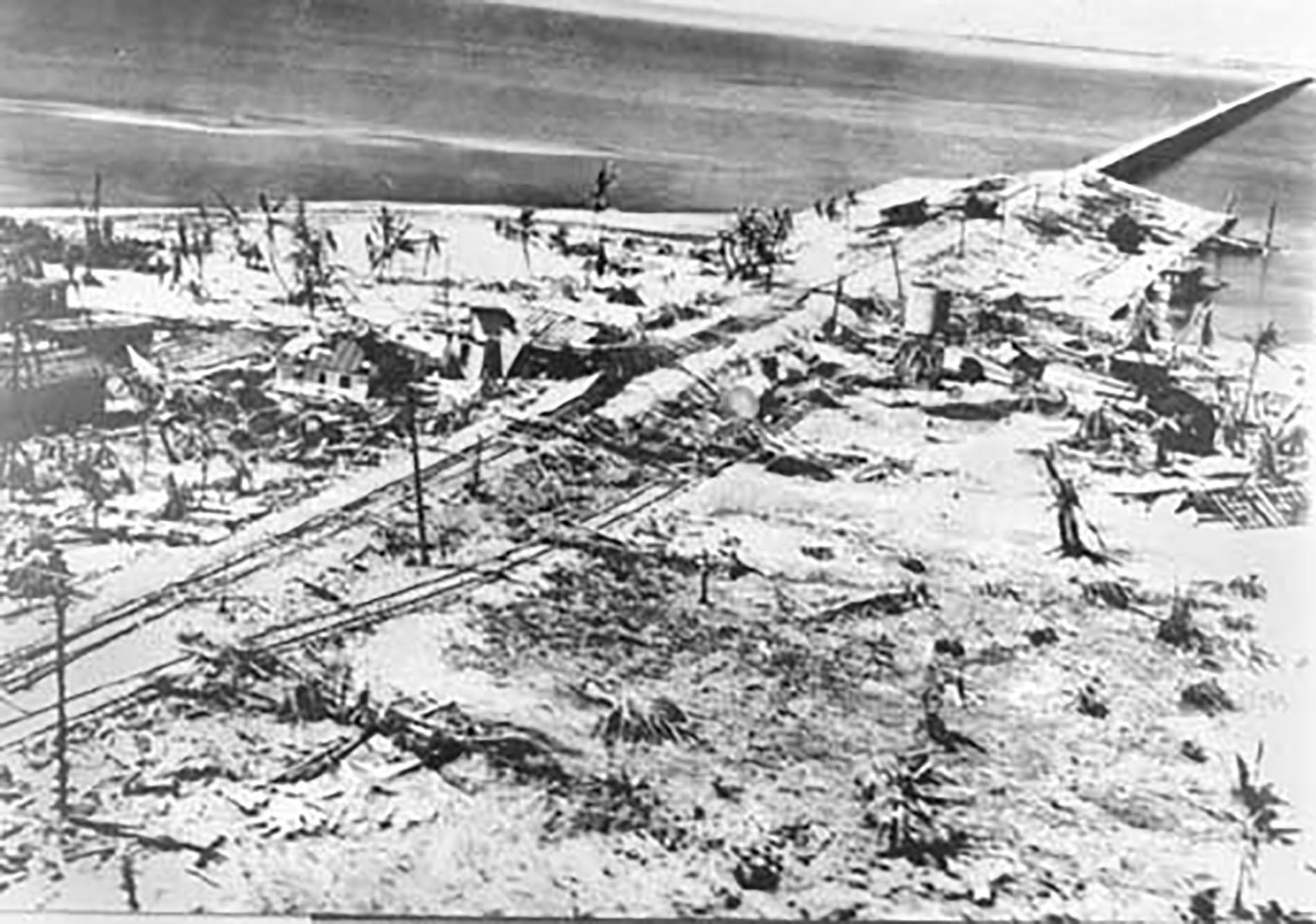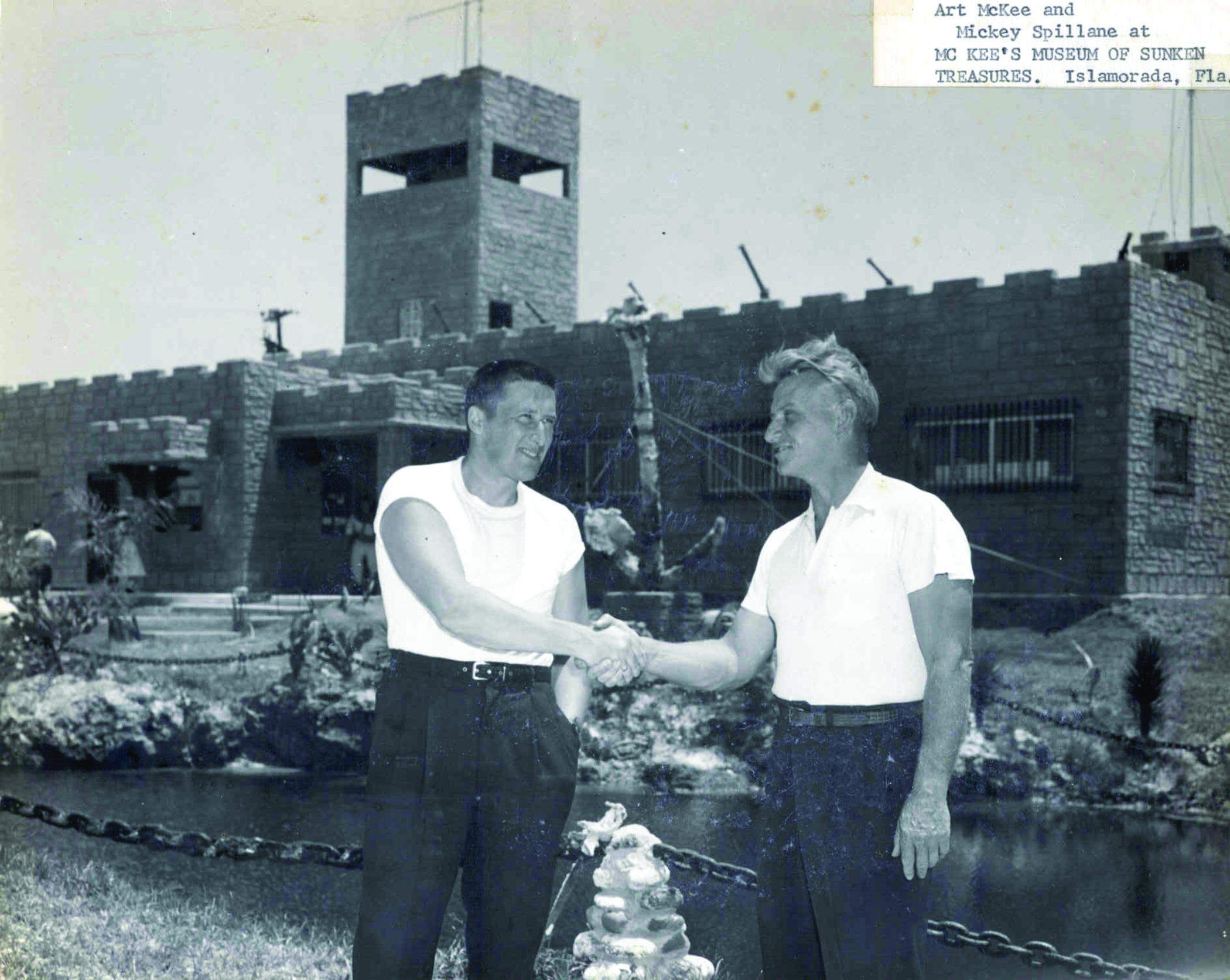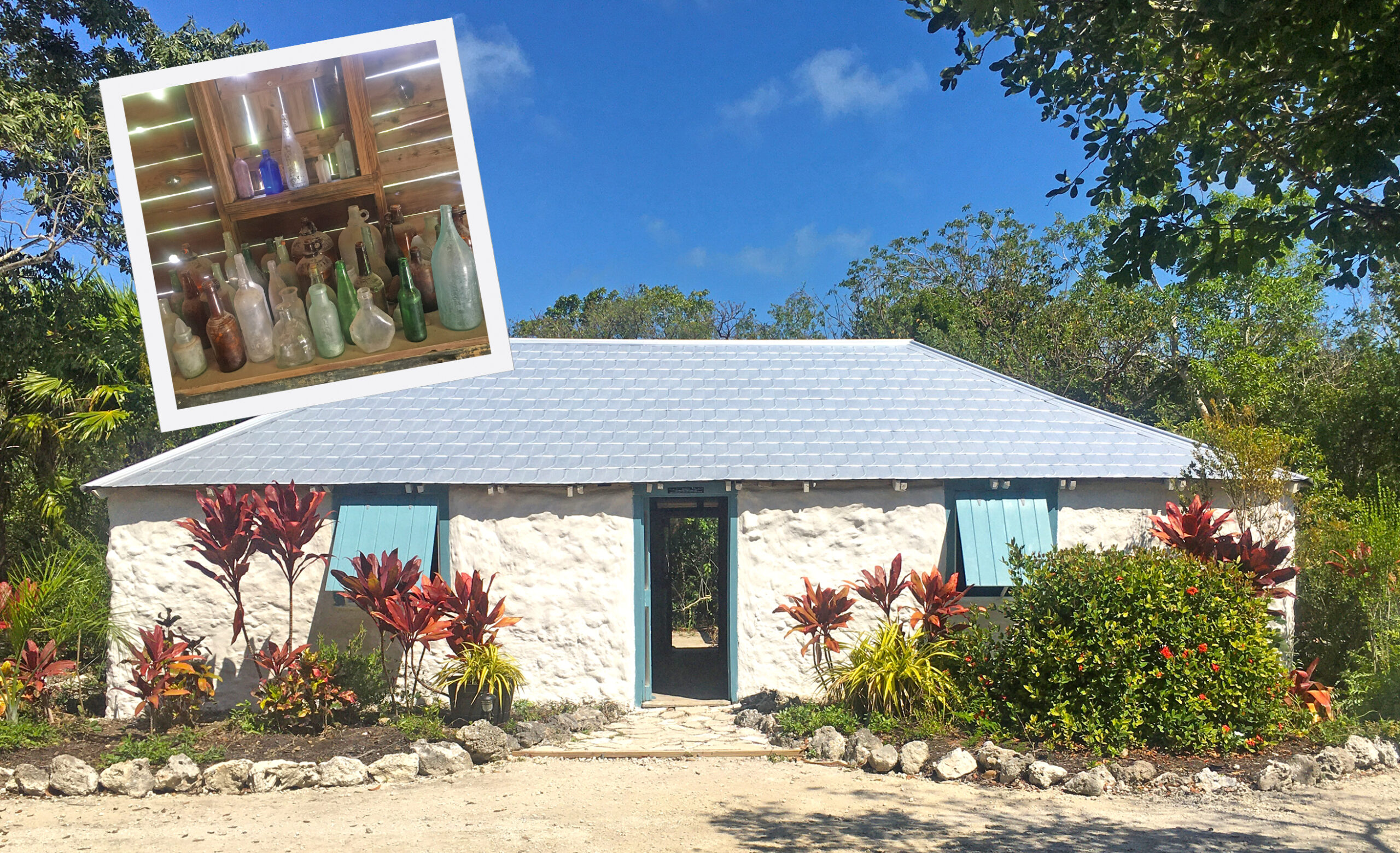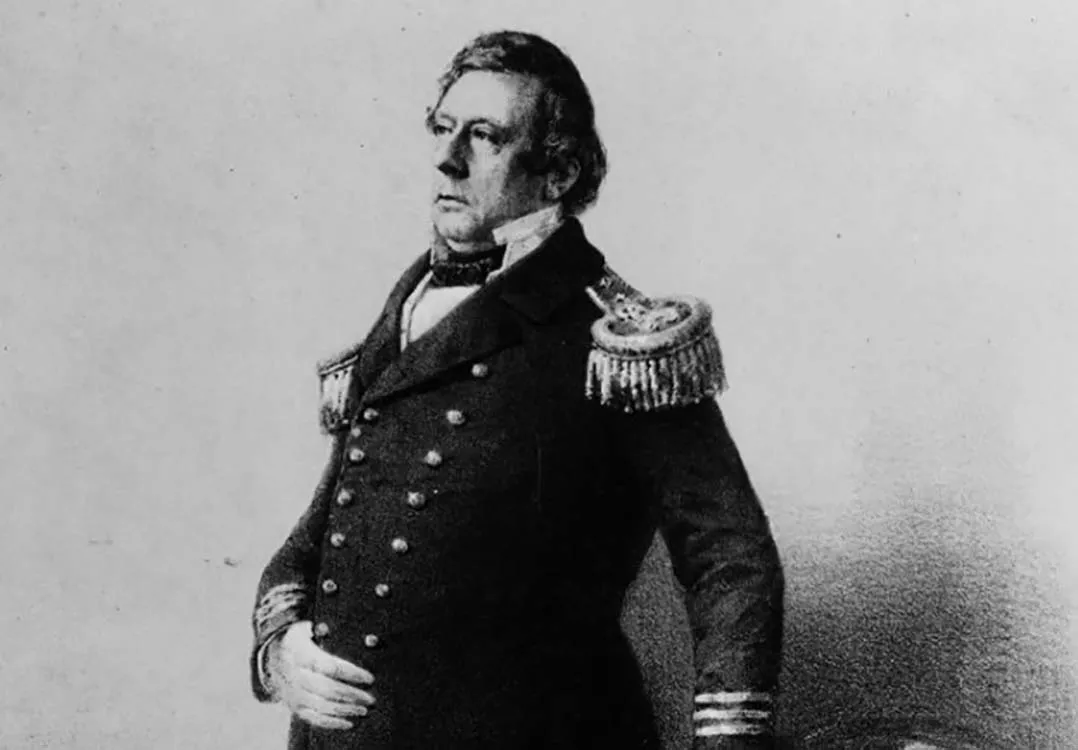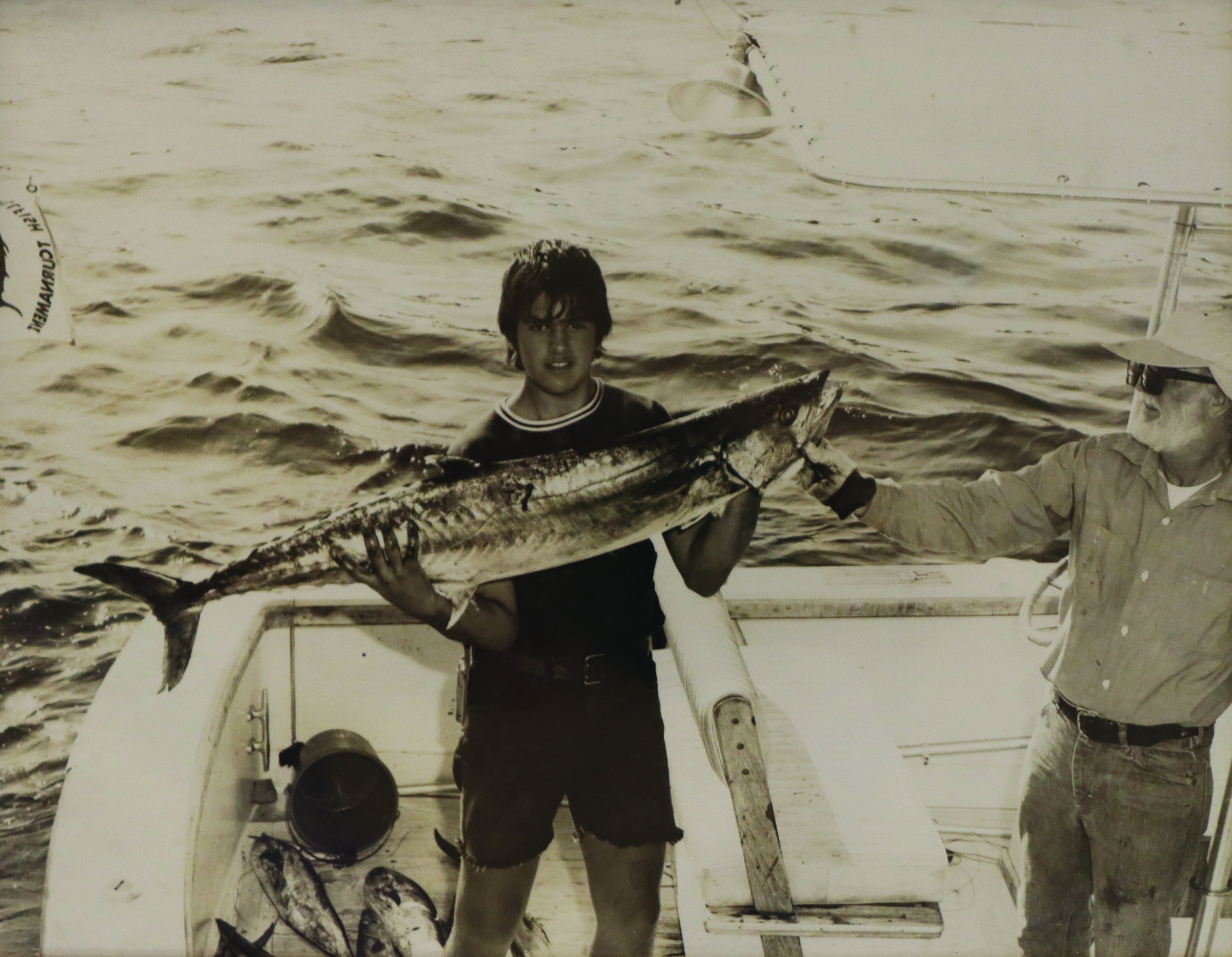Eyewitness accounts of those who survived the Sept. 2, 1935 hurricane — considered the most savage hurricane on record — are tough to hear due to their description of a devastating loss of life in Islamorada. The Florida Keys Memorial near Mile Marker 81.6, also described by locals as the hurricane monument, commemorates the loss of some 500 veterans and local residents of the Florida Keys.
Many of the victims drowned as they were swept into the Florida Bay by the massive storm surge. Some were killed by flying debris. Others who survived the storm later died from exposure. Around 8:20 p.m., sustained winds of 200 mph and a barometer reading of 26.35 characterized that fateful day in Islamorada, in which most buildings and the famed Florida Keys Overseas Railway created by Henry Flagler were destroyed. Barometric pressure is the physical pressure exerted by all of the air above a person, so imagine the forces people felt for many hours. The record low reading for North American was registered by a barometer aboard a boat owned by Ivan Olsen, according to Historian Jerry Wilkinson.
Hundreds of World War I veterans who were housed on Lower Matecumbe Key lost their lives while being paid to construct the Overseas Highway through a Works Progress Administration project. In 1937, the cremated remains of about 300 veterans were placed in the crypt in front of the monument. The height of the monument is roughly equal to the height of the tidal surge that washed over the Keys.
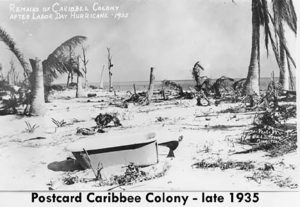
Paul Pugh, Top Sergeant of Camp # 1:
On Windley Key, about 70 men hung on to a water tank car on the railway. It was hell to just hang on and not be able to do anything. When in France, we had something to fight against. Down here, we just had to wait for death and do nothing. Men who hadn’t thought of God in years, were mumbling prayers that night as they tried to hold on to the tank car.
A veteran at camp #5 on the upper end of Lower Matecumbe:
[Some took] shelter in a cesspool under a three-holder. The concrete tank was 5 feet high with a drain going to the ocean, which was blocked with coats and blankets. A wave pushed the packing out and water rushed in causing them to leave for higher ground. As they came up out of the pit, some were blown away. The day after the storm, this camp reported that of the 185 men, only 12 were found alive.
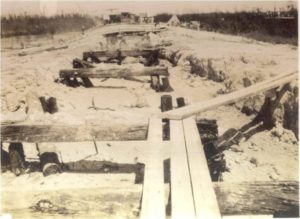
Veterans who did survive were interviewed in the ensuing days by journalists hungry for first-hand accounts. The late Keys historian, Irving Eyster, collected these eyewitness reports for the Matecumbe Historical Trust (MHT), now operated by his daughter, Barbara Edgar.
The Florida Keys History & Discovery Center in its display of the Labor Day Hurricane in 1935 decribes the increasing strength of the hurricane. What began as a Category 1 on Sept. 1 was 200 miles off the Upper Keys. But, by 7 p.m. it was a Category 2 and 160 miles away. Then, it slowed to a crawl but winds had increased to 104. Labor Day morning, Sept. 2, it contained 140 mph winds, making it a category 4, and by 1 p.m., it had reached Category 5, which is winds of 157 mph or higher… and it was headed for the Matecumbe Keys.
Etta Parker Sweeting, who owned a grocery store on Upper Matecumbe Key with her husband, Eddie, said paper was being peeled off the roof of their store when they returned from the post office after a check for mail on Sept. 2 around 1-2 p.m.
The center also shares the words of the Alligator Lighthouse keepers who survived the ordeal, despite witnessing the shattering of half-inch glass protecting the beacon and the lens being lifted off the tower and blown away.
The amazing chronicles continue. Historian Wilkinson’s website said, “The State Road Department [owned a] houseboat where many of its engineers lived. It was anchored offshore of Camp 3. During the hurricane, Engineer Sheeran moved the boat into Hurricane Creek on the west side of lower Lower Matecumbe Key. The boat was damaged, but all survived.”
Another interesting haven for storm survivors was a school bus located west of the Matecumbe Hotel on Upper Matecumbe Key.
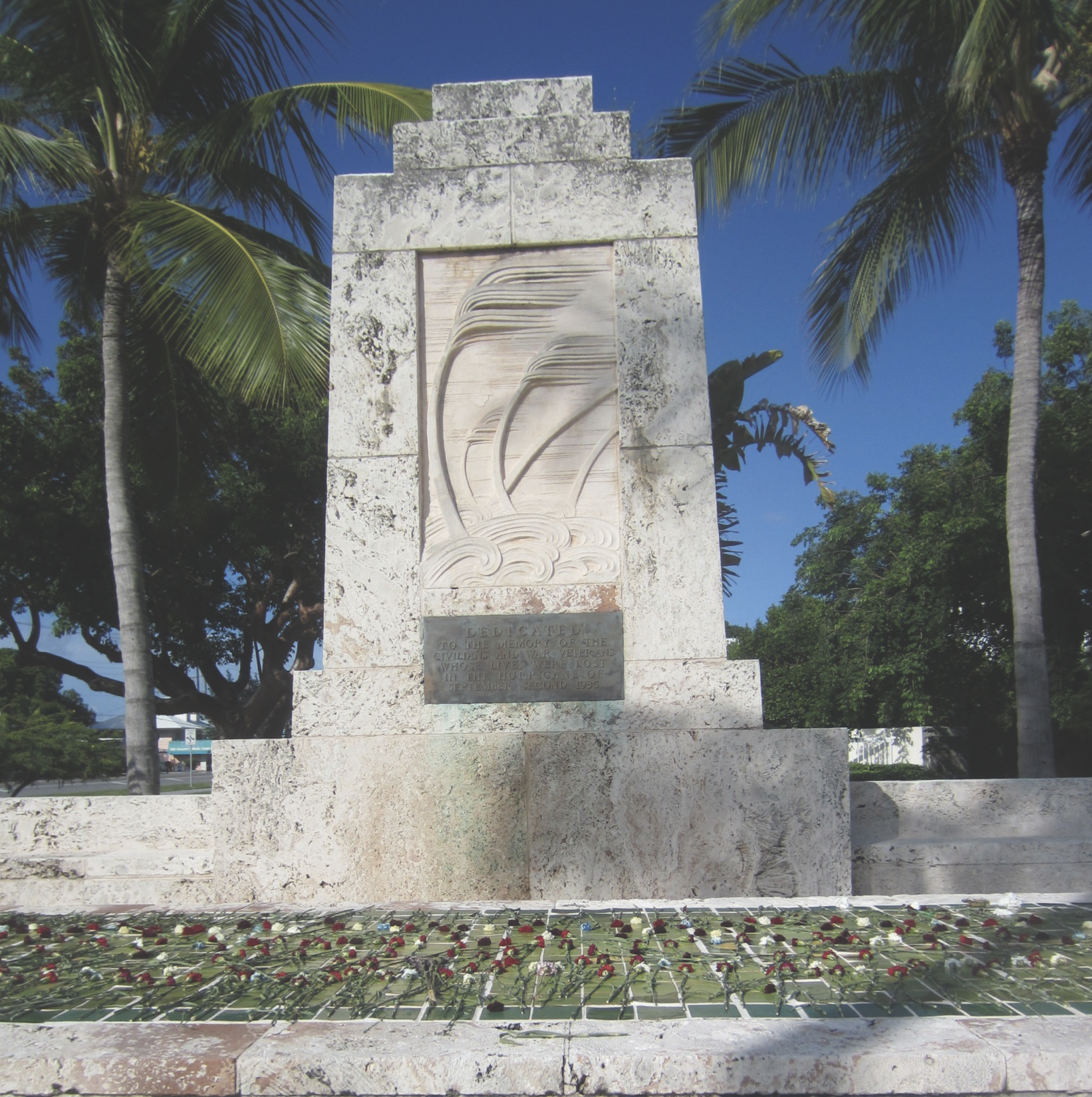 We all know the heat September weather in the Florida Keys provides as a rule. Wilkinson thus emphasized why speed of operations and recovery were necessary. He said on Sept. 6, 1935, the governor ordered cremation of the dead to prevent pestilence. Gas masks were being used and antiseptic practices were strictly enforced. Gasoline, oil or both were used to ignite the funeral pyre. Ceremonies, such as one at Snake Creek, took place. A rabbi, priest, Protestant minister, civilian official and National Guardsman officiated at all cremations. Military honors were given for all with a traditional rifle salute. “Markers of various sizes and kinds were placed at each cremation site,” Wilkinson noted. “Reasonably accurate records were maintained.” More than 4,000 people attended the Florida Keys Memorial dedication in 1937 which commemorates the lost veterans and citizens, and which is on the National Register of Historic Places. Nine year old Faye Parker with the help of two Boy Scouts, unveiled the 18-foot high obelisk which remains today and at which the story of the monument will be re-told at the annual MHT Labor Day Ceremony set for 9 a.m. on Sept. 6.
We all know the heat September weather in the Florida Keys provides as a rule. Wilkinson thus emphasized why speed of operations and recovery were necessary. He said on Sept. 6, 1935, the governor ordered cremation of the dead to prevent pestilence. Gas masks were being used and antiseptic practices were strictly enforced. Gasoline, oil or both were used to ignite the funeral pyre. Ceremonies, such as one at Snake Creek, took place. A rabbi, priest, Protestant minister, civilian official and National Guardsman officiated at all cremations. Military honors were given for all with a traditional rifle salute. “Markers of various sizes and kinds were placed at each cremation site,” Wilkinson noted. “Reasonably accurate records were maintained.” More than 4,000 people attended the Florida Keys Memorial dedication in 1937 which commemorates the lost veterans and citizens, and which is on the National Register of Historic Places. Nine year old Faye Parker with the help of two Boy Scouts, unveiled the 18-foot high obelisk which remains today and at which the story of the monument will be re-told at the annual MHT Labor Day Ceremony set for 9 a.m. on Sept. 6.
– Article Contributed by: Jill Zima Borski


